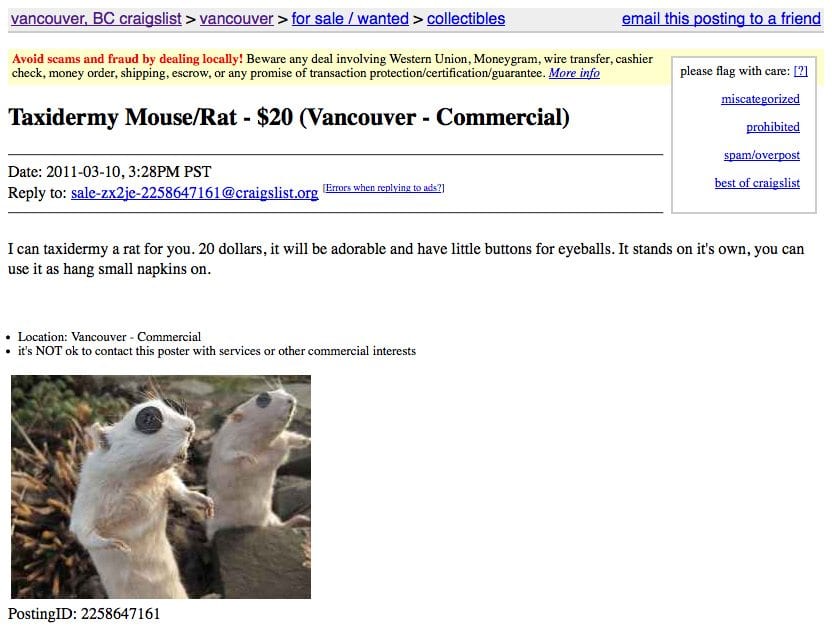Why Smart Businesses Don’t Finish Building Their Websites
admin | Dec 12, 2013
You looked great in that sweater back in the day, but you know it’s time to replace it. Styles change, you changed, and now it’s just embarrassing. It has been eight years since your last wardrobe update, and it’s time to throw it all away and get a fresh look. Ridiculous, right?
Then why do you treat your website like your wardrobe?
Smart businesses like Amazon and Google don’t do that. Instead, they constantly make incremental and informed changes to specific pages and to specific aspects of their websites. Great websites aren’t stagnant. They don’t get “finished” and then neglected. They continually evolve, and so should yours. Here are five reasons why (plus four tips at the end of this post):
1. People Don’t Like Change
 I first learned this when I rebuilt an auctioneer’s website many years ago. The business had (by any standard) the worst website ever. It had 2 pages — the home page and a contact page. The home page had information about the company, (scroll down), lists of current and upcoming auctions, (scroll some more), more information about current and upcoming auctions, (scroll even more), then a list of past auctions, (I’m still scrolling!), then more information about those past auctions. I had to put some ice on my overworked scrolling finger after that experience. I’ll also mention here that it was ugly, by any standard. They were in business for many years and had hundreds of auctions listed. It was like a database in linear layout. It was ridiculous, inconvenient, and (I’ll say it again), ugly. A fresh new wonderful sensible website would be a sure win.
I first learned this when I rebuilt an auctioneer’s website many years ago. The business had (by any standard) the worst website ever. It had 2 pages — the home page and a contact page. The home page had information about the company, (scroll down), lists of current and upcoming auctions, (scroll some more), more information about current and upcoming auctions, (scroll even more), then a list of past auctions, (I’m still scrolling!), then more information about those past auctions. I had to put some ice on my overworked scrolling finger after that experience. I’ll also mention here that it was ugly, by any standard. They were in business for many years and had hundreds of auctions listed. It was like a database in linear layout. It was ridiculous, inconvenient, and (I’ll say it again), ugly. A fresh new wonderful sensible website would be a sure win.
Naturally, I was shocked when I got a call two weeks after a fairly new, easy-to-navigate site was launched. “Our phone is ringing off the hook with people complaining about the new website.” People liked it ugly and basically on one (eternal) page. I couldn’t believe what I was hearing. But now I understand. People had grown attached to the ugly, ridiculous website, and now it was gone.
If I haven’t convinced you of this fact, pay attention to your friends’ reactions on Facebook next time that social media website makes any changes. People become disoriented with big changes to websites they’ve become familiar with. That’s one reason why your business should practice making constant small changes instead of one big rebuild every decade or so.
OK, if your current site is really, really bad, you probably need to plan for a complete overhaul. Just make sure this time you determine to end your 5–10 year cycles of website rebuild, neglect, degradation, embarrassment, and rebuild.
2. Your New Website is a First Draft
I don’t care if you hire the best designers money can buy or if you spent a whole year in beta or in the wire-framing phase. When a website is newly published, it’s built on presumptions, not facts of what works best for users. Website builders make layout and user interface decisions using their personal preferences (what they believe looks good), experience of what has worked before, what other website companies are doing, and published best practices. (Or they may buy a template and put your logo on it). While this may get you a great start, smart companies know that true discovery of great user experiences are reached through incremental and ongoing user observations and A/B testing.
So even if you just launched the best website in your industry and you’re tickled pink about it, consider this the beginning, not the end, of your publication journey. I’m a big fan of awesome branding and impactful design. Those factors are success multipliers for sure, especially in some industries. But a competitor with a great user interface that’s easy to use will beat your pretty website any day. If you don’t agree with me, I’ve got only one word for you: Craigslist. You’ll only arrive at an “awesome” website if you are disciplined to keep studying your audience and learning from your website’s visitor behaviors.
 It’s certainly not pretty, but it works well and people like it.
It’s certainly not pretty, but it works well and people like it.
3. Rebuilds are Hard on Cashflow
Do I really need to even talk about this? So many businesses wait until their website is so bad it starts costing them business and is a public embarrassment. Only then do they cough up a budget for a major rebuild. They don’t discuss ROI for this expense. It’s a cost of doing business at this point of neglect.
Why not be constantly measuring the incremental improvements of your website then see conversion rates improve? Measure that value and attribute an ROI on increased traffic conversion rates. Don’t wait until your website is costing your business. Don’t miss opportunities to learn from your audience along the way and to incrementally build the best performing website ever.
4. Your Business is Constantly Changing
With every sad song sung about an outdated website, there’s at least one line about how it doesn’t include the business’ present services or products and how it has outdated, incorrect information. That’s because businesses evolve, even conservative businesses. Websites need to be constantly evolving with the business. There is no such thing as a good online brochure. It’s a communication tool, not a brochure. It makes no sense to have a stagnant virtual representation of a business that is changing. It’s a bad plan. Don’t do it.
5. Google Loves Fresh Websites
 They even named an algorithm update after it for heaven’s sake. “Freshness” started giving higher visibility to pages with new content in November of 2011. That factor remains today. In a time when search engine visibility is so valuable to businesses, why would even think of building a new stagnant website and then neglecting it again? By the way, Google doesn’t reward good intentions for blogging.
They even named an algorithm update after it for heaven’s sake. “Freshness” started giving higher visibility to pages with new content in November of 2011. That factor remains today. In a time when search engine visibility is so valuable to businesses, why would even think of building a new stagnant website and then neglecting it again? By the way, Google doesn’t reward good intentions for blogging.
Written content is king when it comes to search engine optimization. Really good content that your visitors love will surely build your business’ online reputation over time. That has to be done as an ongoing process that evolves with time and that evolves with your business. The strange thing about your website’s visitors is that while they hate a major change that disorients them, they love to discover new and interesting changes of content when they return to your website. Show them a stagnant brochure two visits in a row and kiss them goodbye for a very long time.
What You Can Do
If your website is stuck in the cycle of radical rebuild, neglect, degradation, embarrassment, and rebuild, it’s time to make a change in your approach. Here’s 4 things you can do.
1. Hire a website company that takes a long-term and integrated approach to building your website. Don’t hire a project oriented vendor who has no good plan for “post-launch.”
2. Make sure your website is built on a user-friendly content management system (CMS) that people within your organization are comfortable using. If possible, avoid using any proprietary system that your website company owns. It nearly always ends badly, especially when it comes time for changing vendors.
3. Start reading up from some of the great user interface experts like Tim Ash. If you don’t have time to become your own expert, consider “Are you familiar with Tim Ash,” and “Have you read any of his books?” as important questions for interview questions for your next Internet marketing company.
4. Allocate time, money, and personnel for an ongoing website improvement plan. You know from your last epic rebuild that the cost of neglect is painful. It’s time to learn from your past mistakes and never finish improving your next website.